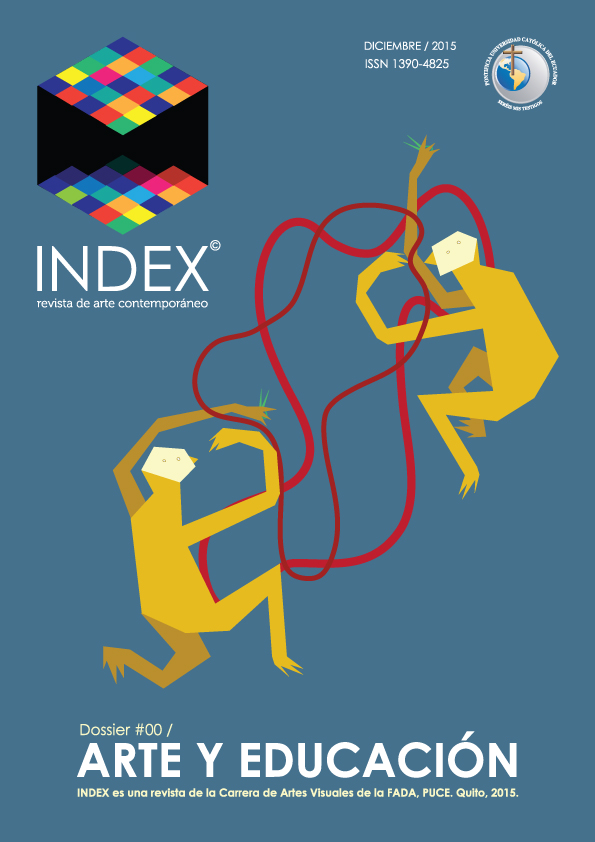Art and culture in the amazonic contemporary painting: Guimer Garcías’s “El buho”
Main Article Content
Abstract
This article reveals the relation between the author’s artistic work and his culture, showing it is impossible to understand a work of art without knowing it´s cultural context. This is an approach to the author, based on interviews applied like ethnographic methodology, which has allowed us to analyze and comprehend the artist’s production, for he is known as such only by an ethno-Amazonian artisan group. In this text, important ideas about culture are reevaluated before applied to the case of indigenous painting. The outcome is a different interpretation of the piece “El búho” by the Amazonian-Peruvian painter Guímer García. This piece shows the work of art in complex cultural terms that allow to rethink the artist´s work.
Keywords: Culture, Painting, Shipibo, Interpretation, Amazonian art.
Downloads
Article Details
Index, revista de arte contemporáneo maneja sus derechos bajo licencia Creative Commons Reconocimiento-NoComercial 4.0. En ese sentido los envíos quedan sujetos a la decisión del autor.
References
Belaunde, L. E., (2009). Kené: arte ciencia y tradición en diseño. Lima: Instituto Nacional de Cultura.
Bhabha, H., (2002). El lugar de la cultura. Buenos Aires: Manantial.
Borea, G., (2010). "Personal cartographies of a Huitoto mythology: Rember Yahuarcani and the enlarging of the Perubian contemporary art scene". En Rev. De antropología social dos Alunos do PPGAS-UFSCar, v.2, n.2, jul-dic. Pp.67-87.
Crehan, K., (2004). Gramsci, cultura y antropología. Barcelona: Bellaterra.
Debray, R., (1998). Vida y muerte de la imagen. Historia de la mirada en occidente. Barcelona: Paidós.
Descola, P., (1998). Las cosmologías de los indios de la Amazonía. Zainak, 17, 1998, pp. 219-227.
Gonçalves, M. A, (2007). Personalidad y procesos de subjetivación en una ontología amazónica. Amazonía Peruana, Tomo XV, 30, diciembre, pp. 159-184.
Soria Casaverde, M. B., (2004). Introducción al Mundo Semiótico de los diseños Shipibo-Conibo. Lima: UNMSM y Seminario de Historia Rural Andina.

